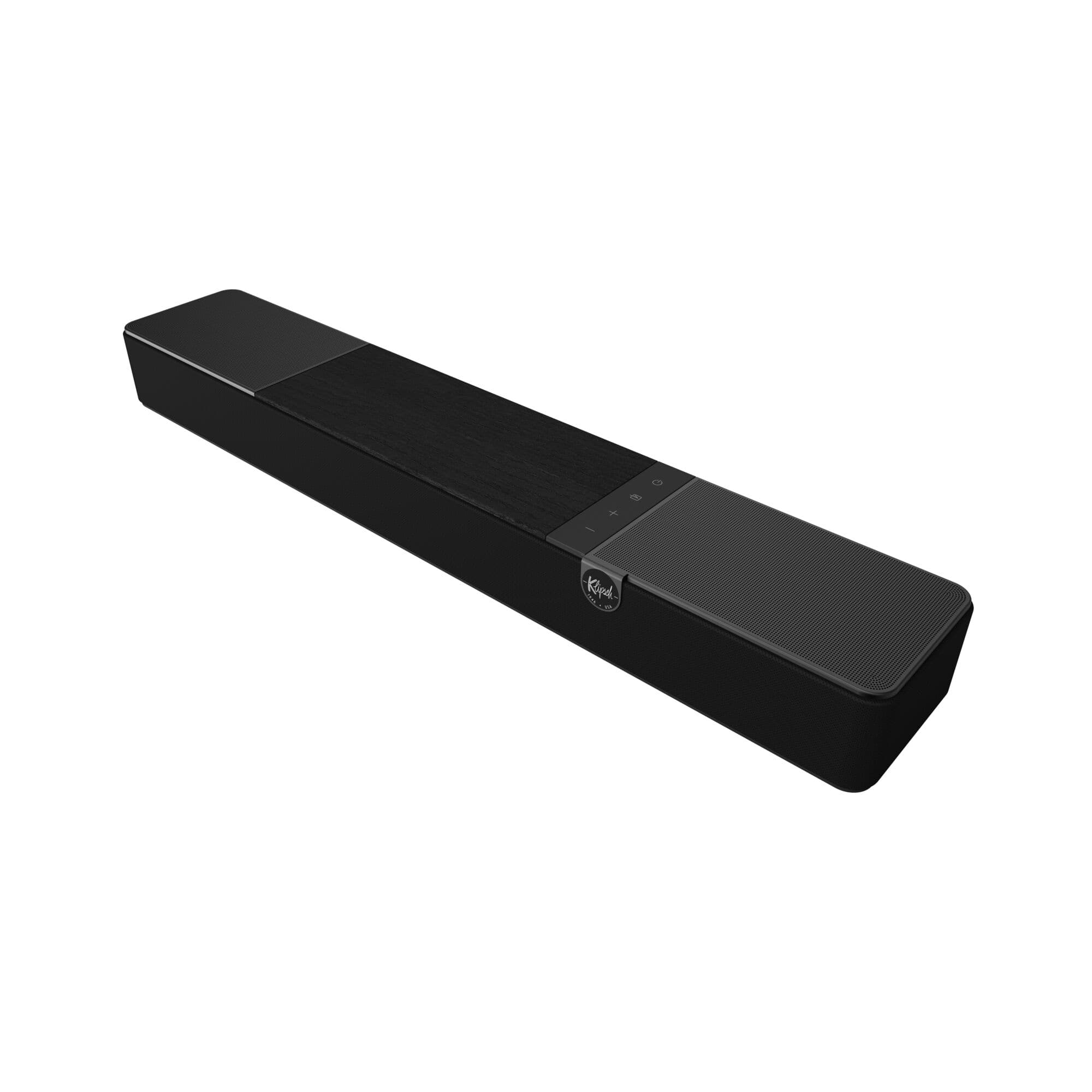 Klipsch Flexus Core 100 Soundbar
Klipsch Flexus Core 100 Soundbar

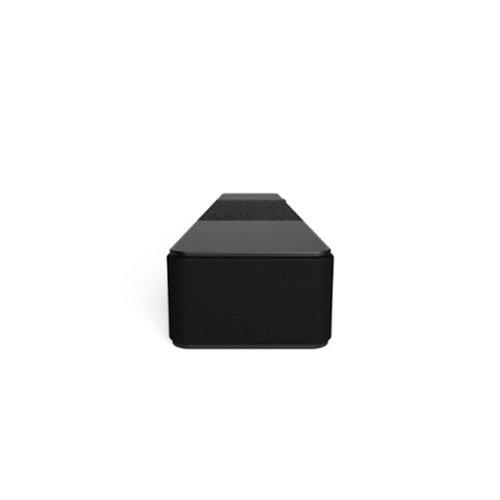

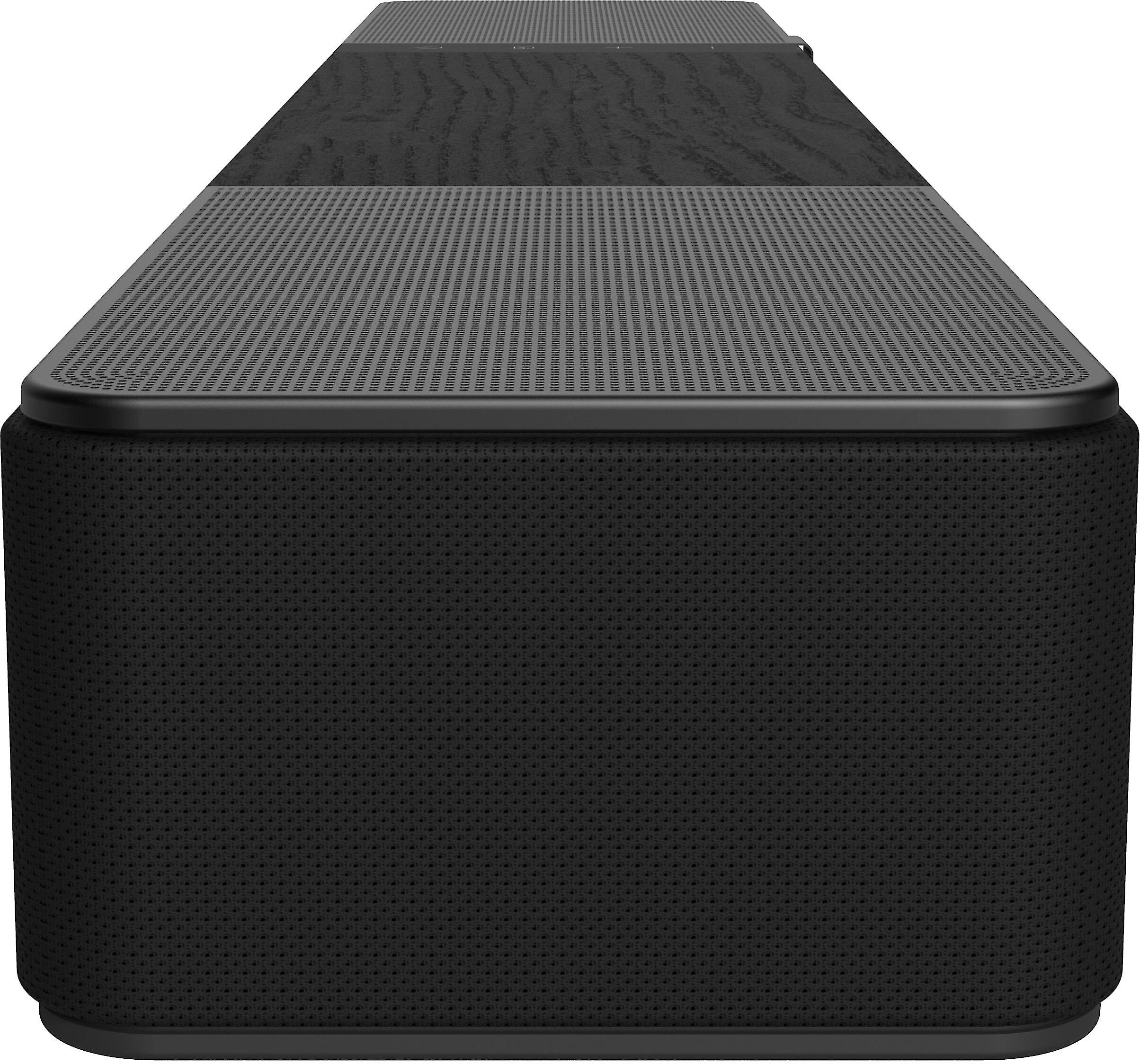
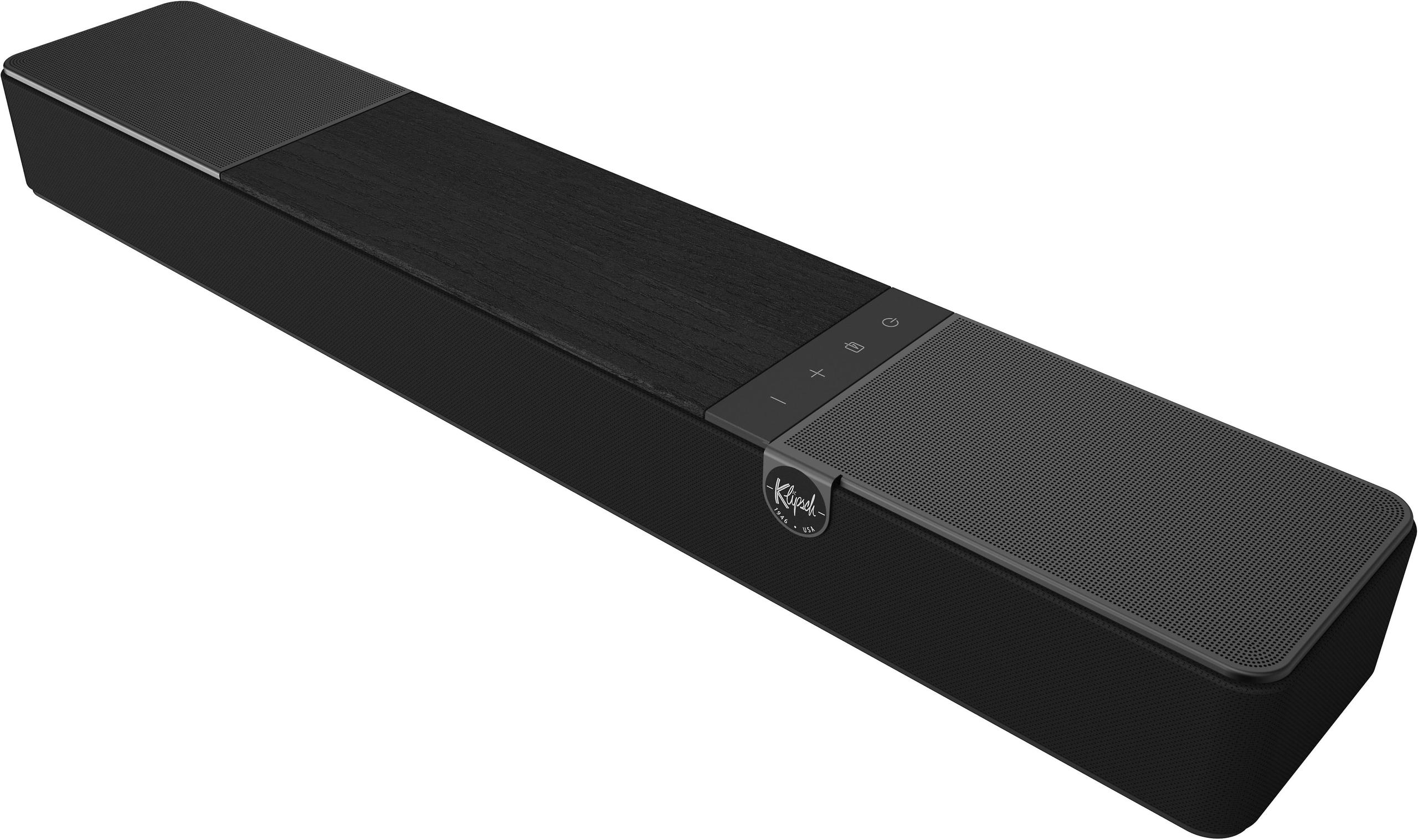



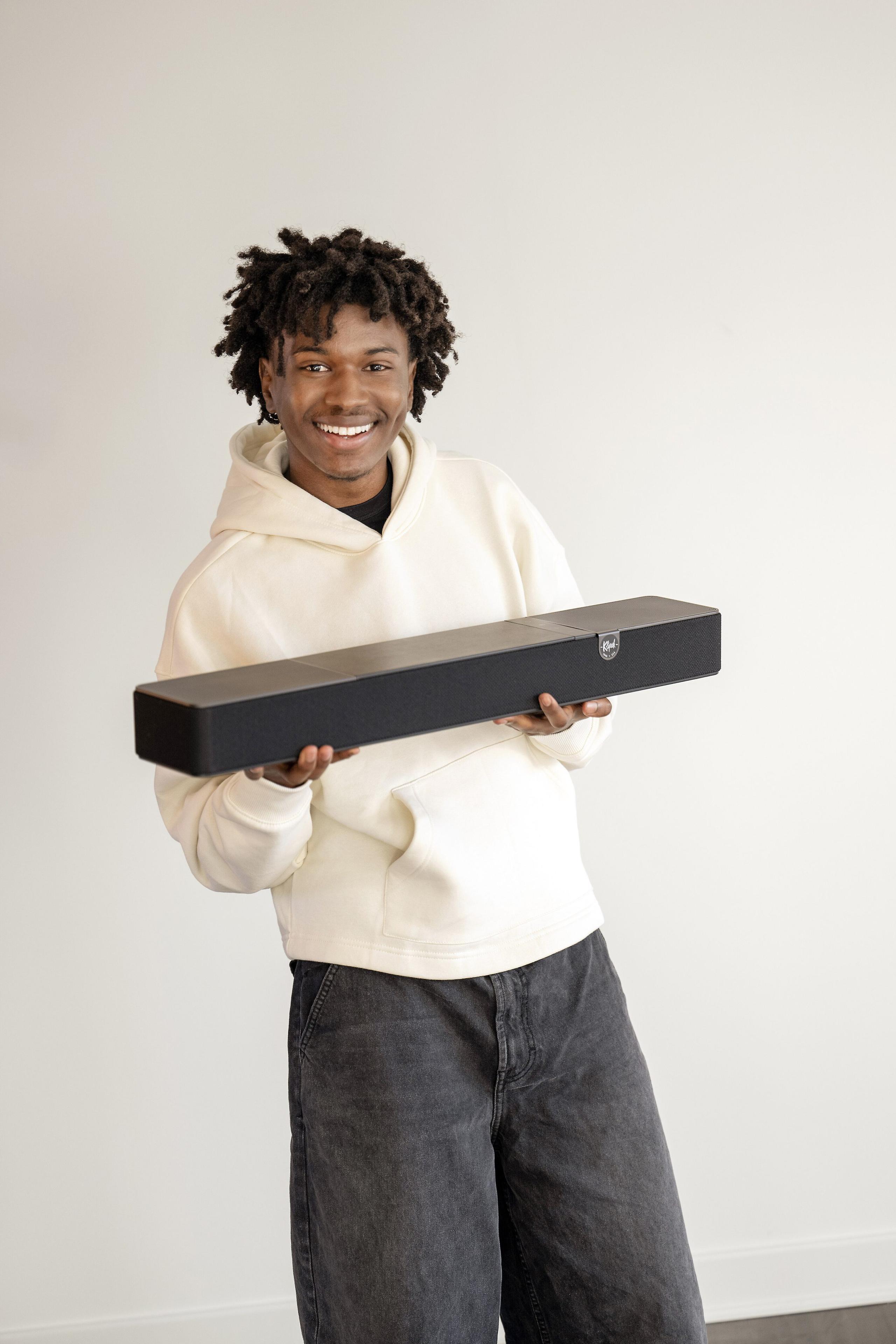


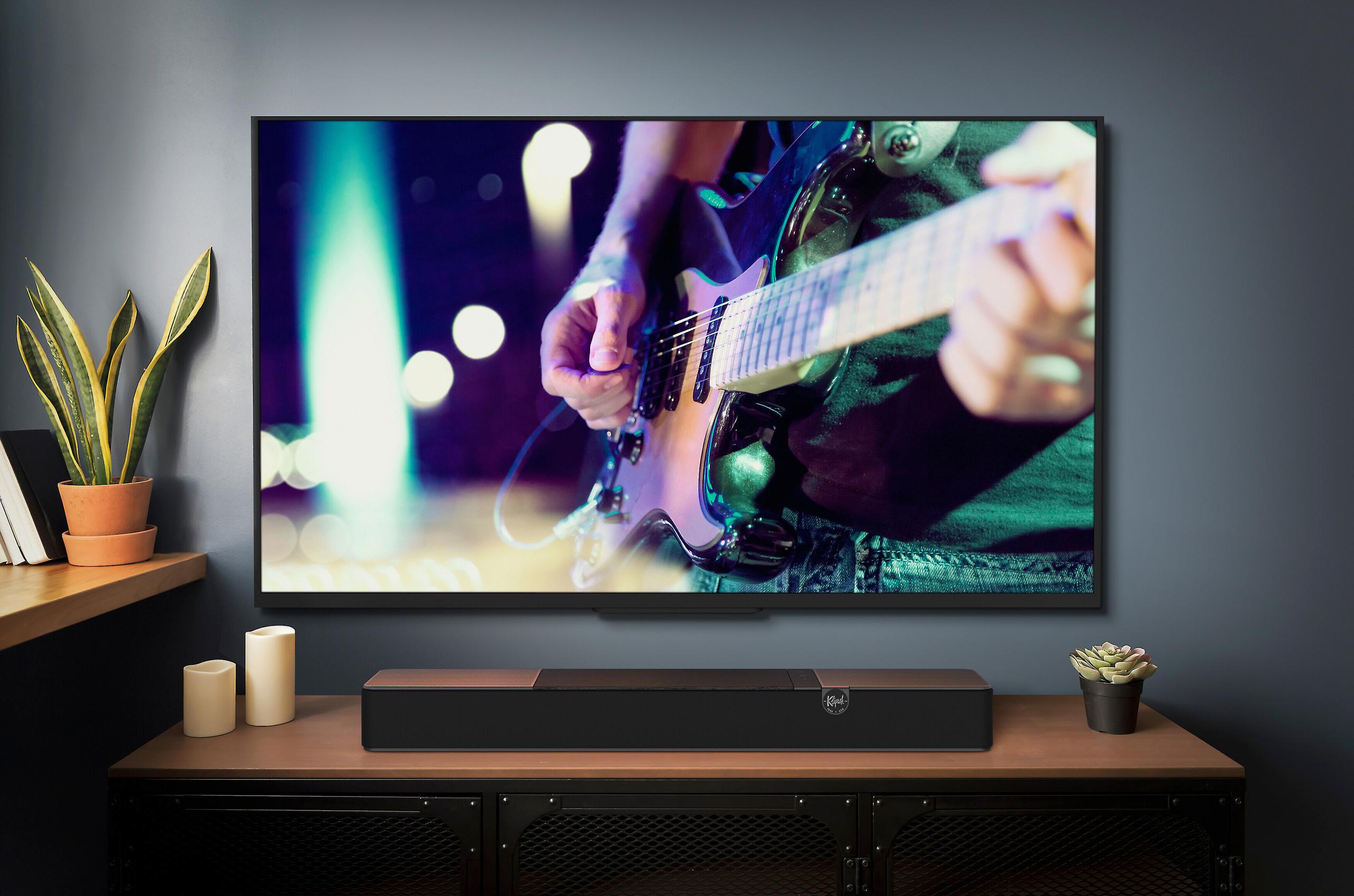
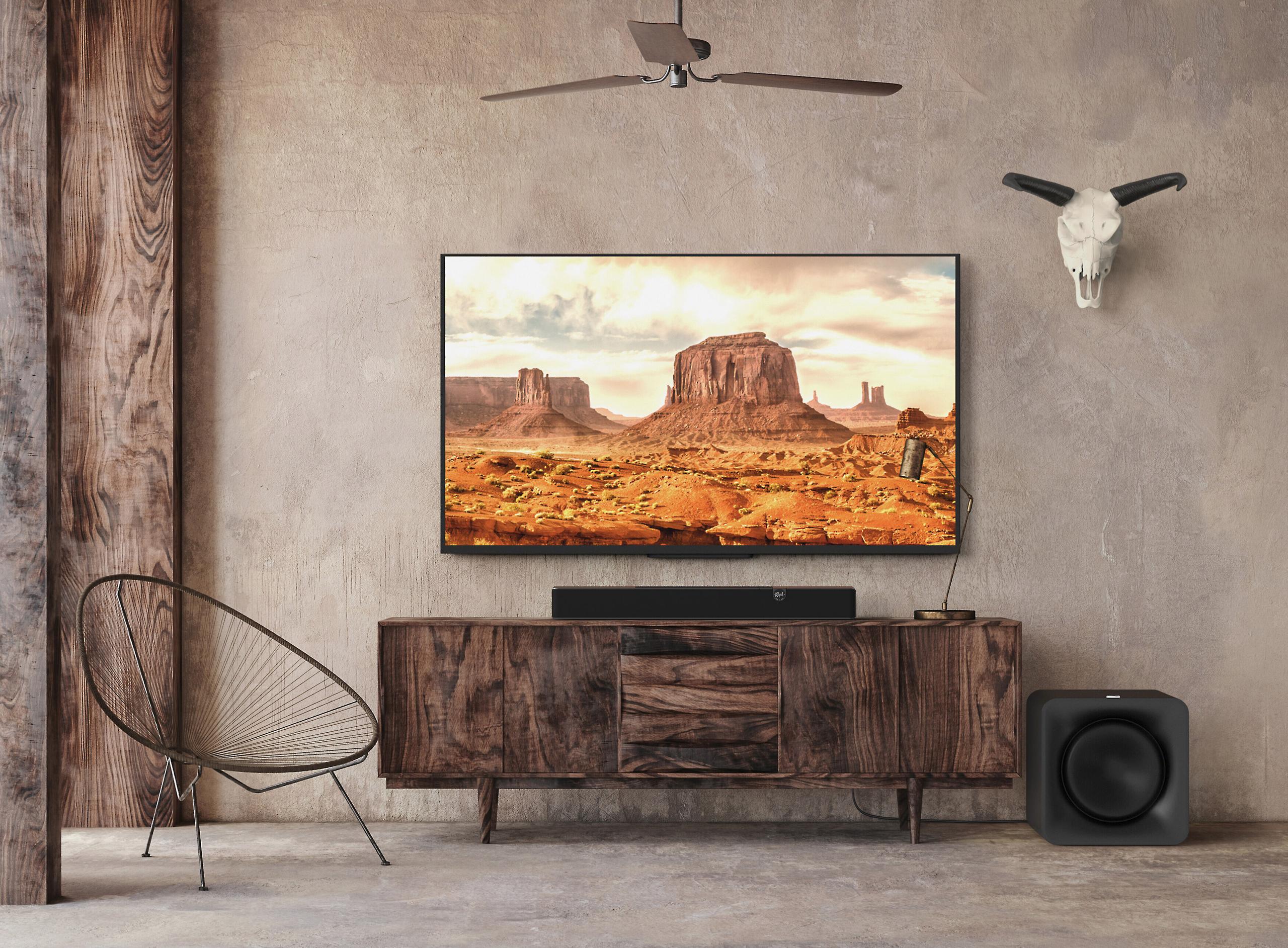













$349.00 Original price was: $349.00.$247.36Current price is: $247.36.
A Surprisingly Capable All-in-One Solution
When Klipsch released the Flexus Core 100 in late 2023, they aimed to solve a common problem: delivering impressive home theater sound without cluttering the room with multiple speakers. After extensive testing in various room configurations, we've found it largely succeeds at this goal, offering some compelling advantages over traditional soundbar setups.
At the heart of the Flexus Core 100 lies some impressive engineering. The dual 4-inch built-in subwoofers (these are the speakers that handle the low, bass frequencies) are a standout feature. In our testing, they produced surprisingly deep bass down to 45Hz - that's low enough to feel the rumble in action movies without needing a separate subwoofer unit. For context, most TV speakers only reach about 100Hz, missing much of the impact in movie soundtracks.
The aluminum cone drivers (the main speakers) measure 2.25 inches and handle the mid and high frequencies. Aluminum is chosen here for its rigidity, which helps reduce distortion when playing at higher volumes. In practice, this means dialogue remains clear even during intense action scenes - something that's particularly noticeable when watching dialogue-heavy shows like "The Crown" or news broadcasts.
In our medium-sized (15' x 20') testing room, the Flexus Core 100 filled the space admirably. Here's what stood out:
The Dolby Atmos processing (technology that creates a more immersive sound field) makes a noticeable difference, though it's important to note this isn't "true" Atmos with height channels. Instead, it uses digital processing to create a wider, more encompassing soundstage. While watching "Dune," the sweeping desert scenes felt more expansive, and the spacecraft flyovers had convincing movement across the room.
Connected to a PS5 via HDMI eARC (Enhanced Audio Return Channel - this allows high-quality audio to pass between devices), the soundbar showed minimal audio lag. Games like "God of War Ragnarök" benefited from the precise sound positioning, making it easier to locate enemies off-screen.
Klipsch's heritage as a speaker manufacturer shows in the music performance. The soundbar handles different genres well, though bass-heavy electronic music can occasionally push the built-in subwoofers to their limits. Bluetooth connectivity worked reliably up to about 30 feet in our tests, though we'd recommend using the HDMI connection for the best sound quality.
The physical setup takes about 10 minutes, with clear instructions and included mounting hardware if you prefer wall mounting. The Klipsch Connect Plus app deserves special mention - it's surprisingly polished for a first-generation product, offering useful EQ presets and the ability to create custom sound profiles.
The inclusion of HDMI eARC, optical, and USB-C inputs provides flexibility for different setups. We particularly appreciated the auto-power feature, which turns the soundbar on and off with the TV - a small but convenient touch.
At $399, the Flexus Core 100 positions itself in a competitive price bracket. What sets it apart is the combination of:
After several weeks of testing, some practical observations emerged:
The Flexus Core 100 represents a new direction for Klipsch, incorporating lessons learned from their previous soundbars. The built-in subwoofers are a significant improvement over their earlier attempts, and the wireless expansion capability shows they're thinking about long-term user needs.
Compared to similarly priced competitors like the Sonos Beam Gen 2 ($449) and Bose Smart Soundbar 300 ($399), the Flexus Core 100 offers better bass response out of the box, though it lacks some of the smart home integration features found in those models.
The Flexus Core 100 is ideal for:
It might not be the best choice for:
The Klipsch Flexus Core 100 delivers impressive performance in a thoughtfully designed package. While it won't replace a full home theater setup, it provides a significant upgrade over TV speakers and many competing soundbars in its price range. The built-in subwoofers work surprisingly well, and the expansion capabilities make it a sound long-term investment.
The combination of performance, convenience, and future-proofing makes it easy to recommend for most users looking to improve their TV audio experience. While there are more powerful options available, few match the Flexus Core 100's balance of features and value at this price point.
For those seeking a single-unit solution that doesn't compromise on sound quality, the Flexus Core 100 deserves serious consideration. It's a capable all-rounder that particularly shines in movie and TV performance, making it an excellent choice for the modern home theater.
The Klipsch Flexus Core 100 offers excellent value at $399, especially for users wanting quality home theater sound without multiple speakers. Its built-in subwoofers and expandability make it a worthwhile investment for most users upgrading from TV speakers.
No, the Flexus Core 100 includes dual 4-inch built-in subwoofers that provide strong bass down to 45Hz. While you can add an external subwoofer later, most users won't need one for average-sized rooms.
At 28 inches wide, the soundbar pairs well with TVs 50 inches and larger. It's particularly well-matched with 55-65 inch TVs, which are common sizes for home theater setups.
Yes, the Flexus Core 100 processes Dolby Atmos signals, though it creates a virtual effect rather than using upward-firing speakers. This still provides an improved sense of immersion compared to standard stereo.
Yes, it excels at movie playback with clear dialogue reproduction and impressive bass response. The Dolby Atmos processing creates an engaging soundstage that enhances the home theater experience.
Yes, the soundbar comes with wall-mounting brackets and hardware included. At only 3 inches tall and 5 inches deep, it maintains a slim profile when wall-mounted.
Yes, the Flexus Core 100 works with any TV through multiple connection options including HDMI eARC, optical, and USB-C. HDMI eARC provides the best experience with compatible TVs.
Setup is straightforward, typically taking 10-15 minutes. The soundbar includes all necessary cables and a user-friendly app for configuration. Auto-calibration helps optimize sound for your room.
Yes, you can stream music via Bluetooth or through your TV's connected apps. The soundbar provides good music playback quality, though it's optimized for movie and TV audio.
Yes, the Klipsch Flexus Core 100 supports wireless expansion with additional Flexus surrounds and subwoofers using Klipsch Transport technology, making it future-proof for growing home theater needs.
We've done our best to create useful and informative comparisons to help you decide what product to buy. Our research has used advanced automated methods to create this comparison and perfection is not possible - please contact us for corrections or questions. These are the sites we've researched in the creation of this article: cnet.com - klipsch.com - klipsch.com - bestbuy.com - sweetwater.com - assets.onkyo-av.com - youtube.com - worldwidestereo.com - avnirvana.com - target.com
| Klipsch Flexus Core 100 |
|---|
| System Power - Determines how loud and dynamic the sound can get: 100W RMS |
| Bass Response - Lower Hz means deeper bass: 45Hz - 20kHz |
| Built-in Subwoofers - Eliminates need for external sub: Dual 4" high-output woofers |
| Main Drivers - Larger size typically means better midrange: Two 2.25" aluminum cone drivers |
| HDMI eARC - Enables highest quality audio and easy control: Yes |
| Wireless Expansion - Allows future system growth: Compatible with Flexus surrounds and subwoofers |
| Audio Processing - Affects surround sound quality: Dolby Atmos |
| Connectivity - More options mean better flexibility: HDMI eARC, Bluetooth, USB-C, Digital Optical |
| Width - Important for TV size matching: 28 inches |
| Height - Critical for not blocking TV screen: 3 inches |
| Depth: 5 inches |
| Weight: 10 lbs |
| App Control - Enables custom sound settings: Yes, via Klipsch Connect Plus |
| Mounting Options: Wall-mountable with included brackets |
| Power Supply - Internal is more convenient than power brick: Internal |
The Sennheiser AMBEO Soundbar Mini ($799) takes a dramatically different approach with its sophisticated virtual surround processing and room calibration technology. While it commands a significantly higher price, it creates a more convincing surround sound experience, particularly in smaller, well-defined spaces. The AMBEO's smart features are considerably more advanced, offering Wi-Fi streaming, AirPlay 2, and voice assistant integration - making it a more capable hub for modern entertainment systems. The automatic room calibration is particularly impressive, adjusting the sound profile to match your specific space, something the Flexus Core 100 lacks entirely.
However, the AMBEO Mini's technical sophistication comes with some tradeoffs. Its bass response isn't as robust as the Flexus Core 100's, and it doesn't offer the option to add wireless surrounds or a subwoofer later. The AMBEO Mini makes more sense for those who prioritize advanced processing and smart home integration, particularly in apartment settings or smaller rooms where its virtual surround capabilities can shine. While its premium price point might be harder to justify for some, it represents the cutting edge of what's possible in virtual surround sound technology, even if it can't match the Flexus Core 100's raw audio power and expandability.
🤖 Read Detailed Comparison
👌Sennheiser AMBEO Soundbar Mini Details
💵 See Sennheiser AMBEO Soundbar Mini Price
The $199 Bose TV Speaker takes a more streamlined approach, focusing primarily on dialogue clarity and simplicity of use. Where the Klipsch aims for full-range sound, the Bose excels at making television dialogue crisp and intelligible through its dedicated dialogue enhancement mode. Its compact 23.4-inch width makes it an excellent choice for smaller spaces, and the straightforward setup process requires minimal technical knowledge. While it doesn't match the Klipsch's bass response or overall volume capability, it delivers surprisingly balanced sound for its size and price point.
At nearly half the cost of the Klipsch, the Bose TV Speaker represents strong value for users primarily interested in improving their TV's audio without complications. Though it lacks advanced features like app control and wireless expansion options, its core performance for dialogue-heavy content remains impressive. The limited expandability to only a wired subwoofer might be restrictive for some, but many users will appreciate its simplicity and focus on core functionality. It's particularly well-suited for news watching, documentaries, and general TV viewing in small to medium-sized rooms where crystal-clear dialogue is the priority over immersive sound effects.
🤖 Read Detailed Comparison
👌Bose TV Speaker Soundbar Details
💵 See Bose TV Speaker Soundbar Price
The Bose Solo Soundbar Series 2 ($179.99) takes a simpler approach to TV audio enhancement, focusing on ease of use and compact design. While it lacks the advanced features and connectivity options of the Klipsch, it provides clear dialogue enhancement and improved TV sound in a plug-and-play package that many users will appreciate. Its smaller footprint makes it particularly suitable for bedrooms or smaller spaces where a more powerful soundbar might be overkill.
However, at nearly half the price of the Klipsch, the Bose Solo Series 2 makes some significant compromises. The lack of HDMI connectivity, Bluetooth streaming, and expansion options limits its long-term versatility. The absence of dedicated bass drivers means you won't get the same impact in movies or music, and its lower power output makes it less suitable for larger rooms. While it's a solid choice for basic TV audio enhancement in smaller spaces, users seeking a more immersive home theater experience or future expandability would be better served by the Klipsch's more capable platform.
🤖 Read Detailed Comparison
👌Bose Solo Soundbar Series 2 Soundbar Details
💵 See Bose Solo Soundbar Series 2 Soundbar Price
The Samsung HW-B550D offers compelling value at $177.99, with its most notable advantage being the dedicated center channel speaker and separate wireless subwoofer. This traditional 3.1 configuration excels at dialogue clarity during movies and TV shows, while the 5-inch subwoofer delivers more powerful bass impact compared to the Klipsch's integrated solution. In larger rooms especially, the separate subwoofer can create a more cinematic experience, though it requires additional space and careful placement for optimal performance.
Where the Samsung falls short is in its build quality, music performance, and future expandability. While it handles movies and TV content admirably, especially considering its price point, it doesn't match the Klipsch's refined sound quality for music playback. The Samsung HW-B550D represents an excellent choice for users primarily focused on movie and TV content who want immediate performance without spending premium dollars. Its straightforward setup and proven design make it a safe choice for most users, even if it lacks some of the premium features and expansion options of the Klipsch system.
🤖 Read Detailed Comparison
👌Samsung HW-B550D 3.1 Channel Sound Bar Details
💵 See Samsung HW-B550D 3.1 Channel Sound Bar Price
The Samsung B-Series 5.1 Channel Soundbar with Subwoofer ($277.99) takes a more traditional home theater approach with its separate subwoofer and true surround sound capabilities. Where the Klipsch focuses on premium materials and future expandability, the Samsung system delivers immediate impact with its 430W of total power and dedicated 8" wireless subwoofer. The inclusion of DTS Virtual:X technology and multiple sound modes, including Game Mode and Adaptive Sound, makes it particularly well-suited for movie watching and gaming sessions where immersion is key.
At a lower price point than the Klipsch, the Samsung system provides excellent value for those seeking a complete home theater solution right out of the box. While it doesn't match the Klipsch's musical refinement or premium build quality, the Samsung B-Series excels at creating a more enveloping soundstage with true surround effects and deeper bass response. This makes it an especially compelling choice for larger rooms where its multiple speakers can create a more theater-like experience, though it does require more space and setup consideration than the Klipsch's single-bar design.
🤖 Read Detailed Comparison
👌Samsung B-Series 5.1 Channel Soundbar with Subwoofer Details
💵 See Samsung B-Series 5.1 Channel Soundbar with Subwoofer Price
The $1,997 Samsung HW-Q990D represents a significant step up in both features and performance, though at nearly six times the price. Its 11.1.4 channel configuration, with dedicated surround speakers and four up-firing drivers, creates a truly immersive sound field that the Flexus Core 100 can't match. The Samsung's SpaceFit Sound Pro technology automatically calibrates the system to your room's acoustics, while its dedicated wireless subwoofer delivers deeper, more impactful bass. For gaming, the inclusion of HDMI 2.1 ports with 4K/120Hz passthrough makes it more future-proof, and features like Q-Symphony integration with Samsung TVs can enhance the overall sound stage even further.
However, the premium features of the Samsung HW-Q990D come with additional complexity in setup and placement requirements. You'll need proper positioning for the surround speakers and subwoofer, adequate ceiling height for the Atmos effects, and more space overall. While it delivers superior performance across movies, games, and music, the significant price difference makes it a consideration primarily for dedicated home theater enthusiasts or those with larger rooms who want a more cinema-like experience. For many users, especially those in smaller spaces or apartments, the Flexus Core 100's simpler setup and expandability might actually be more practical.
🤖 Read Detailed Comparison
👌Samsung HW-Q990D 11.1.4 Channel Sound Bar Details
💵 See Samsung HW-Q990D 11.1.4 Channel Sound Bar Price
The Samsung HW-S700D takes a different approach with its 3.1 channel configuration and separate wireless subwoofer. Its standout features include Dolby Atmos support, a dedicated center channel for enhanced dialogue clarity, and advanced room correction through SpaceFit Sound technology. The inclusion of smart features like voice assistant compatibility and SmartThings integration also sets it apart, offering more flexibility for those invested in a connected home setup. At $397.99, it commands a $48 premium over the Klipsch, but justifies this with superior movie performance and expandability options.
Where the Samsung really shines is in its home theater capabilities. The dedicated center channel makes a noticeable difference in dialogue clarity during complex movie scenes, while the separate wireless subwoofer delivers deeper, more impactful bass than the Klipsch's built-in solution. The Samsung HW-S700D also offers the ability to add wireless rear speakers later, making it a more future-proof choice for those who might want to expand to a full surround system. However, this flexibility comes with the trade-off of requiring more space and a slightly more complex setup process.
🤖 Read Detailed Comparison
👌Samsung HW-S700D 3.1 Channel Slim Soundbar Details
💵 See Samsung HW-S700D 3.1 Channel Slim Soundbar Price
The Klipsch Flexus Core 200 ($499.99) steps up the game with a more theater-focused experience, featuring a wider 44-inch soundstage and powerful 185W output that fills larger rooms with ease. Its standout 3.1.2 channel configuration includes dedicated upfiring speakers for Dolby Atmos content, creating a genuine sense of height in movies and games. The addition of a discrete center channel with a horn-loaded tweeter delivers noticeably clearer dialogue, especially during complex action scenes where speech can often get lost in the mix.
While the $150 premium over the Core 100 is significant, it's justified for home theater enthusiasts or those with rooms larger than 200 square feet. The Core 200's extra power and advanced channel configuration create a more immersive soundfield that's immediately noticeable with movies and high-quality streaming content. It also offers more extensive expansion options, supporting multiple wireless subwoofers and surrounds for a true theater-like experience. For users with larger TVs (55 inches or above) who want to maximize their audio experience without moving to a full receiver-based system, the Core 200 hits a sweet spot between performance and convenience.
🤖 Read Detailed Comparison
👌Klipsch Flexus Core 200 3.1.2 Soundbar Details
💵 See Klipsch Flexus Core 200 3.1.2 Soundbar Price
The Sony BRAVIA Theater Bar 9 ($1,099) represents a significant step up in technology and immersive audio capabilities, though at more than triple the price. Its standout feature is the sophisticated 360 Spatial Sound Mapping system, which uses 13 speakers to create virtual sound points throughout your room. This technology, combined with advanced room calibration and AI-powered voice enhancement, delivers a more cinema-like experience, particularly beneficial in larger spaces. For movie enthusiasts and those with dedicated home theater rooms, these features create a notably more immersive soundstage that the Klipsch can't match.
However, the premium price point of the Sony BRAVIA Theater Bar 9 raises questions about value, especially considering it may require an additional subwoofer for optimal bass response. While its integration with Sony TVs and superior processing make it a powerful option for serious home theater enthusiasts, many users might find the additional features unnecessary for everyday viewing. The advanced calibration system, while impressive, also means a more complex setup process compared to the Klipsch's plug-and-play approach. For those with larger rooms and higher-end home theater aspirations, the Sony's premium features might justify the investment, but it's important to consider whether these advantages warrant the substantial price difference.
🤖 Read Detailed Comparison
👌Sony BRAVIA Theater Bar 9 Soundbar Details
💵 See Sony BRAVIA Theater Bar 9 Soundbar Price
The LG S95TR ($999.99) takes a dramatically different approach with its premium 9.1.5 channel configuration, offering true Dolby Atmos performance through dedicated up-firing speakers and wireless rear surrounds. While significantly more expensive, it delivers a legitimate home theater experience with sound that moves around and above you, creating a sphere of immersive audio that the Flexus Core 100 simply cannot match. The separate wireless subwoofer and advanced features like AI room calibration, multiple HDMI inputs, and smart home integration provide flexibility that justifies its higher price point for serious home theater enthusiasts.
However, this enhanced performance comes with added complexity - you'll need more space, multiple power outlets, and time to optimize speaker placement. The LG system truly shines in medium to large rooms where its advanced capabilities can be fully utilized. For those seeking maximum impact from movies and games, and who have both the space and budget, the S95TR represents the more capable option. Still, it's worth noting that at nearly triple the price of the Flexus Core 100, many users may find the Klipsch's simpler approach and strong price-to-performance ratio more appealing for everyday use.
🤖 Read Detailed Comparison
👌LG S95TR 9.1.5 Channel Soundbar with Dolby Atmos Soundbar Details
💵 See LG S95TR 9.1.5 Channel Soundbar with Dolby Atmos Soundbar Price
The $699 Bose Smart Ultra Soundbar represents a more premium approach, emphasizing advanced audio processing and smart home integration. Its standout AI Dialogue Mode uses machine learning to enhance speech clarity without compromising other audio elements, while the ADAPTiQ room calibration system automatically optimizes sound for your specific space. The comprehensive smart features, including built-in Alexa and Google Assistant, AirPlay 2, and multi-room audio capabilities, make it a more versatile hub for whole-home entertainment. This technology-forward approach creates a more immersive listening experience, particularly beneficial for complex movie soundtracks.
However, the doubled price point raises questions about value, especially considering both soundbars lack true upward-firing drivers for Dolby Atmos. While the Bose offers more sophisticated virtual processing and wider soundstage, it requires an additional subwoofer for deep bass impact that the Klipsch achieves out of the box. The Bose's primary advantages lie in its smart features and room calibration rather than raw audio performance. For those deeply invested in smart home technology or requiring advanced audio processing, these features might justify the premium, but purely on sound quality terms, the price difference becomes harder to justify.
🤖 Read Detailed Comparison
👌Bose Smart Ultra Soundbar with Dolby Atmos Details
💵 See Bose Smart Ultra Soundbar with Dolby Atmos Price
The Sony HT-A8000 BRAVIA Theater Bar 8 ($698) takes a significantly different approach with its premium feature set and more sophisticated audio processing. Where the Flexus Core 100 excels at direct stereo sound, the Sony creates a more cinematic experience through its 11-speaker array and advanced 360 Spatial Sound Mapping technology. The addition of dedicated upward-firing drivers and side-firing speakers allows for true Dolby Atmos playback, while features like automatic room calibration and Sound Field Optimization help create a more immersive soundstage. Gaming enthusiasts will appreciate the HDMI 2.1 connectivity with support for 4K/120Hz and VRR.
At twice the price, the Sony HT-A8000 offers noticeably better surround sound performance and more expansion options, but it requires a larger room to truly benefit from its advanced processing capabilities. While it delivers superior home theater performance, it needs an optional subwoofer to match the Flexus Core 100's built-in bass response. For those prioritizing movies and gaming in a larger space and willing to invest in premium features, the Sony presents a compelling, albeit pricier, alternative. However, many users may find the Flexus Core 100's straightforward approach and excellent stereo performance more practical for everyday use.
🤖 Read Detailed Comparison
👌Sony HT-A8000 BRAVIA Theater Bar 8 Soundbar Details
💵 See Sony HT-A8000 BRAVIA Theater Bar 8 Soundbar Price
The $999 Sonos Arc Ultra takes a dramatically different approach with its premium positioning and advanced feature set. Where the Flexus Core 100 focuses on pure audio performance, the Arc Ultra delivers a more comprehensive home theater experience with true 9.1.4 Dolby Atmos support through 14 precisely-engineered drivers. Its advanced Sound Motion woofer technology and increased number of tweeters create a notably wider soundstage with more convincing overhead effects, particularly beneficial in larger rooms or open floor plans. The Arc Ultra also integrates seamlessly into the Sonos ecosystem, offering multi-room audio capabilities, voice control, and regular feature updates through software.
While the Arc Ultra's performance advantages are clear, its price point of nearly three times the Flexus Core 100 requires careful consideration. The superior bass response, more immersive surround effects, and smart features make it a compelling choice for serious home theater enthusiasts or those already invested in the Sonos ecosystem. However, for many users, the Flexus Core 100's excellent price-to-performance ratio and simpler setup may prove more practical. The $999 Sonos Arc Ultra represents the cutting edge of soundbar technology, but its premium features may exceed the needs of users seeking straightforward TV audio enhancement.
🤖 Read Detailed Comparison
👌Sonos Arc Ultra Dolby Atmos Soundbar Details
💵 See Sonos Arc Ultra Dolby Atmos Soundbar Price
The JBL Bar 1000 represents a significant step up in home theater capabilities, offering a complete 7.1.4 surround sound solution for $1,139. Its standout features include detachable wireless rear speakers that charge when connected to the main bar, four up-firing speakers for true Dolby Atmos height effects, and a powerful 10-inch wireless subwoofer. The system's 880 watts of total power and advanced room calibration technology deliver a genuinely cinematic experience that the Klipsch can't match. For movie enthusiasts, the ability to hear precise surround effects and overhead sound placement creates an immersive atmosphere that transforms home viewing.
While the JBL Bar 1000 costs more than three times as much as the Klipsch, it justifies its premium price for those seeking a theater-like experience. The system's PureVoice dialogue enhancement technology, multiple HDMI inputs, and built-in Wi-Fi streaming capabilities offer significant advantages for both movies and music playback. However, the trade-offs include a more complex setup process, the need for more space to accommodate multiple speakers, and a higher initial investment. For larger rooms and dedicated home theater spaces, these compromises are worthwhile for the superior audio performance, but many users may find the Klipsch's simpler approach and lower price point more practical for everyday use.
🤖 Read Detailed Comparison
👌JBL Bar 1000 Surround Sound System with 7.1.4 Channel Soundbar, 10" Wireless Subwoofer, Detachable Rear Speakers, and Dolby Atmo Details
💵 See JBL Bar 1000 Surround Sound System with 7.1.4 Channel Soundbar, 10" Wireless Subwoofer, Detachable Rear Speakers, and Dolby Atmo Price
The JBL Bar 300 5.0 ($349.95) approaches home theater audio differently, emphasizing virtual surround capabilities and smart features over traditional stereo performance. Its MultiBeam technology creates an impressive virtual surround effect that works particularly well in small to medium-sized rooms with regular wall layouts. The inclusion of PureVoice dialogue enhancement technology makes a noticeable difference during movies and TV shows, while built-in WiFi enables streaming via AirPlay and Chromecast - features notably absent from the Klipsch.
Where the JBL truly differentiates itself is in its all-in-one approach to home theater sound. While it can't match the Klipsch's bass impact or musical refinement, it offers more immediate gratification with its virtual 5.0 channel configuration and automatic room calibration. The 260W of total power provides adequate volume for most spaces, though the bass response isn't quite as robust without dedicated subwoofers. For users seeking a simple, feature-rich solution without the complexity of additional speakers, the JBL presents a compelling alternative at the same price point.
🤖 Read Detailed Comparison
👌JBL Bar 300 5.0 Soundbar Details
💵 See JBL Bar 300 5.0 Soundbar Price
The Yamaha SR-B40A ($399.95) distinguishes itself with a more traditional soundbar-subwoofer combo design, featuring a powerful 6.5-inch wireless subwoofer that delivers noticeably deeper bass impact than the Klipsch's built-in woofers. This setup excels in movie and gaming performance, particularly during action sequences where the dedicated subwoofer can truly flex its muscles. The inclusion of Dolby Atmos processing, even though virtual, adds an extra dimension to the sound that the Klipsch doesn't offer. Its Clear Voice technology is also particularly effective at enhancing dialogue clarity in challenging scenes.
While it costs $50 more and requires space for a separate subwoofer, the Yamaha SR-B40A provides superior overall sound performance out of the box. Its multiple sound modes are well-tuned for different content types, and the ability to fine-tune bass levels independently makes it more versatile across different room sizes and content types. Though it lacks the Klipsch's expansion options and USB-C connectivity, the Yamaha represents excellent value for those wanting maximum impact from a sub-$400 soundbar system, especially in medium to large rooms where its more powerful audio capabilities can truly shine.
🤖 Read Detailed Comparison
👌Yamaha SR-B40A 2.1-Channel Sound Bar with Wireless Subwoofer Details
💵 See Yamaha SR-B40A 2.1-Channel Sound Bar with Wireless Subwoofer Price
The Yamaha SR-B30A offers a compelling alternative at $279.95, featuring an impressive Clear Voice technology that makes dialogue exceptionally crisp and intelligible. Its more compact design includes dual 3-inch built-in subwoofers in a bass-reflex configuration that delivers surprisingly robust low-end performance for its size. While it may not match the Klipsch's dynamic range, the Yamaha excels at everyday TV watching with its balanced sound profile and four optimized sound modes. The intuitive app control and straightforward setup process make it particularly appealing for users who want better sound without complexity.
At $70 less than the Klipsch, the Yamaha SR-B30A presents excellent value for those seeking a simple, all-in-one solution. Its longer design (35.8 inches vs. 28 inches) may better complement larger TVs visually, and its 120W power rating proves more than adequate for small to medium-sized rooms. While it lacks the premium materials and expandability options of the Klipsch, its energy-efficient operation and effective Dolby Atmos implementation make it a smart choice for users who prioritize practical features over future expansion potential. However, those seeking maximum audio performance, especially for music playback, might find the Klipsch's superior dynamics worth the extra investment.
🤖 Read Detailed Comparison
👌Yamaha SR-B30A Sound Bar with Built-In Subwoofers Details
💵 See Yamaha SR-B30A Sound Bar with Built-In Subwoofers Price
The Samsung HW-Q800D ($697.99) takes a more traditional home theater approach with its 5.1.2 channel configuration and separate wireless subwoofer. Its standout features include true Dolby Atmos with dedicated up-firing speakers, SpaceFit Sound room calibration, and a powerful 360W output that fills larger spaces. The separate 8-inch subwoofer delivers noticeably more impactful bass, especially during action scenes and gaming sessions, while the dedicated center channel ensures clearer dialogue in movies and TV shows.
While the Samsung costs nearly twice as much, it justifies the premium by delivering a more complete home theater experience right out of the box. The Samsung HW-Q800D particularly shines in medium to large rooms where its additional power and true surround capabilities make a real difference. However, its separate subwoofer and larger footprint might be overkill for apartment dwellers or smaller rooms, where the Klipsch's more compact design and built-in bass could be a better fit. The Samsung's gaming features and room optimization technology are impressive, but they may not justify the extra cost for users primarily interested in basic TV and music enhancement.
🤖 Read Detailed Comparison
👌Samsung HW-Q800D 5.1.2 Channel Soundbar Details
💵 See Samsung HW-Q800D 5.1.2 Channel Soundbar Price
The LG S90TR takes a dramatically different approach with its true 7.1.3 channel configuration, including separate rear speakers and a wireless subwoofer. While significantly more expensive at $799.99, it delivers a genuine home theater experience with dedicated height channels for Dolby Atmos, creating an immersive bubble of sound that the Flexus Core 100 simply cannot match. The LG's separate 8-inch subwoofer provides deeper, more impactful bass, while its AI room calibration automatically optimizes the sound for your specific space.
For those with larger rooms and the budget to match, the LG S90TR offers substantial advantages in both movies and gaming scenarios. Its additional connectivity options, including Wi-Fi, AirPlay 2, and Spotify Connect, provide more flexibility for streaming content. However, these benefits come with increased setup complexity and space requirements compared to the Flexus Core 100's elegant single-unit solution. While the LG delivers superior technical performance across the board, the value proposition ultimately depends on whether you'll benefit from true surround sound and are willing to accommodate multiple speakers in your space.
🤖 Read Detailed Comparison
👌LG S90TR 7.1.3 Channel Soundbar with Wireless Subwoofer and Rear Speakers - Soundbar Details
💵 See LG S90TR 7.1.3 Channel Soundbar with Wireless Subwoofer and Rear Speakers - Soundbar Price
The $899 JBL Bar 700 represents a more comprehensive home theater solution, delivering a complete 5.1 surround sound system with premium features like PureVoice dialogue enhancement and advanced Dolby Atmos processing. Its standout components include a powerful 10-inch wireless subwoofer and detachable battery-powered rear speakers, which create a genuinely immersive listening experience that virtual surround processing can't match. The system's built-in WiFi enables extensive streaming options through Chromecast, AirPlay, and voice assistant compatibility, making it more versatile for whole-home audio integration.
While the price difference is substantial, the JBL Bar 700 justifies its higher cost by including everything needed for a complete home theater audio setup. The dedicated subwoofer delivers significantly more impactful bass for movie explosions and music, while the physical rear speakers provide precise directional audio that enhances both gaming and movie watching. Though released in 2022, its feature set remains competitive, particularly the automatic room calibration system that optimizes sound for your specific space. For larger rooms and viewers seeking cinema-quality audio without the complexity of separates, the JBL system offers a more refined and powerful out-of-the-box experience.
🤖 Read Detailed Comparison
👌JBL Bar 700 Dolby Atmos 5.1 Soundbar with Subwoofer Details
💵 See JBL Bar 700 Dolby Atmos 5.1 Soundbar with Subwoofer Price
The $498 Sony HT-A3000 represents a more premium approach to home theater sound, featuring true Dolby Atmos processing and a dedicated center channel that delivers exceptional dialogue clarity. Its advanced room correction technology and vertical surround engine create a more convincing three-dimensional soundstage, particularly noticeable during complex movie scenes. While it comes at a higher price point, the Sony's superior processing capabilities and reliable wireless expansion options make it a more future-proof choice for those looking to eventually build a complete home theater system.
The Sony HT-A3000 showcases its advantages most clearly in larger rooms and with challenging content, where its dedicated 3.1 channel configuration and sophisticated digital processing make a real difference in sound positioning and clarity. Though it doesn't match the Klipsch's impressive built-in bass response, it offers more versatile connectivity options including Chromecast, AirPlay 2, and high-quality LDAC Bluetooth streaming. The additional $150 investment brings noticeable improvements in surround sound processing and dialogue clarity, making it a compelling choice for serious home theater enthusiasts who prioritize accurate sound reproduction and expandability over pure music performance.
🤖 Read Detailed Comparison
👌Sony HT-A3000 3.1ch Dolby Atmos Soundbar Details
💵 See Sony HT-A3000 3.1ch Dolby Atmos Soundbar Price
The Sonos Beam Gen 2 ($352) stands out with its sophisticated virtual Dolby Atmos processing and comprehensive smart features, offering a more technologically advanced approach to home theater sound. While it lacks the Flexus Core 100's built-in subwoofers, it compensates with superior dialogue clarity and a more convincing surround sound experience, particularly with modern streaming content. The Beam Gen 2's compact size and TruePlay room calibration technology help it deliver impressive sound that adapts to your space, though iOS users will benefit most from these advanced features.
Where the Sonos Beam Gen 2 really distinguishes itself is in its ecosystem and expandability options. With features like voice control, AirPlay 2, and multi-room audio capabilities, it serves as both a soundbar and a smart home hub. While achieving full home theater performance requires additional purchases like the Sonos Sub and surrounds, the platform's maturity means users get regular software updates and new features over time. This makes it a better long-term investment for those planning to build out a complete home audio system, though it comes at a higher total cost compared to the Flexus Core 100's all-in-one approach.
🤖 Read Detailed Comparison
👌Sonos Beam Gen 2 Soundbar Details
💵 See Sonos Beam Gen 2 Soundbar Price
The Sonos Arc represents a more premium approach to home audio, featuring true Dolby Atmos capability through 11 precisely-tuned drivers, including dedicated up-firing speakers for height effects. Its sophisticated audio architecture creates a notably wider and taller soundstage, particularly beneficial in larger rooms where its immersive sound can truly shine. At $564, it commands a higher price but offers substantial additional features, including built-in voice assistants, AirPlay 2 support, and Trueplay room correction technology that optimizes sound for your specific space using an iOS device.
While the Flexus Core 100 excels in straightforward audio delivery, the Sonos Arc offers a more future-proof and versatile solution as part of the broader Sonos ecosystem. Its multi-room audio capabilities, extensive streaming service support, and regular software updates provide continuing value beyond initial purchase. Though it may require a separate subwoofer for optimal bass performance (adding significant cost), its superior dialogue clarity, more refined sound signature, and ability to create a truly immersive home theater experience make it a compelling choice for those seeking a premium audio solution that can grow with their needs.
🤖 Read Detailed Comparison
👌Sonos Arc Wireless Sound Bar with Dolby Atmos, Apple AirPlay 2, and Built-in Voice Assistant (White) Details
💵 See Sonos Arc Wireless Sound Bar with Dolby Atmos, Apple AirPlay 2, and Built-in Voice Assistant (White) Price
The Polk Audio MagniFi Max AX 3.1.2 represents a more traditional home theater approach, offering true Dolby Atmos with dedicated up-firing speakers and a separate wireless subwoofer. At $559-799, it's a significant price jump from the Klipsch, but that premium brings tangible benefits for movie enthusiasts. The dedicated center channel and Voice Adjust technology deliver superior dialogue clarity, while the 10-inch wireless subwoofer provides deeper, more impactful bass that can't be matched by integrated solutions. The inclusion of Wi-Fi streaming with AirPlay 2 and Chromecast also offers more flexible connectivity options.
However, the Polk's advantages come with some practical considerations. The separate subwoofer requires more space and careful placement, and the powerful bass might be too much for apartment living. While it offers superior home theater performance, particularly with Dolby Atmos content, this comes at nearly twice the price of the Klipsch. For those with dedicated home theater spaces and the budget to match, the Polk delivers a more immersive experience with better expandability through proven wireless surround speakers. But these benefits might be overkill for casual viewers who primarily watch regular TV programming and listen to music.
🤖 Read Detailed Comparison
👌Polk Audio MagniFi Max AX 3.1.2 Soundbar Details
💵 See Polk Audio MagniFi Max AX 3.1.2 Soundbar Price
The $279 Sonos Ray takes a different approach, focusing on smart features and ecosystem integration rather than raw audio power. Its compact design and excellent dialogue clarity make it particularly suited for smaller rooms and apartment living. The standout advantage is its sophisticated streaming capability through Wi-Fi and AirPlay 2, along with seamless integration into the Sonos multi-room audio system. Regular software updates and long-term ecosystem support add significant value for those planning to expand their audio setup over time.
However, the Sonos Ray makes some compromises to hit its lower price point. The bass response is more modest compared to the Klipsch, and the lack of HDMI connectivity might disappoint some users. The optical-only connection and absence of Bluetooth might feel limiting for those who want multiple input options. Yet for users prioritizing streaming capabilities and smart features over pure audio muscle, the Sonos Ray offers an attractive entry point into the Sonos ecosystem, particularly for smaller spaces where its balanced, dialogue-focused sound signature shines.
🤖 Read Detailed Comparison
👌Sonos Ray Soundbar Details
💵 See Sonos Ray Soundbar Price
The $1,499 Sennheiser AMBEO Plus represents a significant step up in both performance and price, offering a premium single-unit solution for those seeking theater-quality sound. Its standout feature is the advanced 7.1.4 virtualization technology, which creates a convincing surround sound experience without the need for additional speakers. The AMBEO's room calibration system actively measures your space's acoustics, delivering optimized sound that reaches deeper bass frequencies (down to 38Hz) and creates more precise spatial audio effects. This makes it particularly impressive for movie watching, where you can genuinely hear sounds moving around and above you.
While the AMBEO Plus commands a much higher price tag, it justifies the cost through its superior technology and performance benefits. The inclusion of comprehensive streaming options (AirPlay 2, Chromecast, Spotify Connect) and true Dolby Atmos processing make it a more versatile entertainment hub. For larger rooms and serious home theater enthusiasts who want the best possible sound without the complexity of a multi-speaker setup, the AMBEO Plus delivers an experience that the Flexus Core 100 simply can't match. However, this level of performance comes at a premium that's more than four times the price of the Flexus Core 100.
🤖 Read Detailed Comparison
👌Sennheiser AMBEO Soundbar Plus Home Theater System Details
💵 See Sennheiser AMBEO Soundbar Plus Home Theater System Price
The TCL Q85H Q Class represents a more traditional home theater approach with its comprehensive 7.1.4 channel system, including dedicated rear speakers and a wireless subwoofer. Its standout features include physical up-firing speakers for true Dolby Atmos effects, a powerful 6.5-inch subwoofer that delivers room-shaking bass, and genuine surround sound capabilities that create a more immersive viewing experience. While it requires more setup effort and space than the Klipsch, the TCL's ability to produce distinct audio effects from multiple directions creates a more theater-like experience that virtual processing can't fully replicate.
At $599-999, the TCL Q85H Q Class commands a premium over the Klipsch but justifies its price for users seeking maximum home theater impact. The system's 860W total power output and separate subwoofer provide the kind of dynamic range and bass response that movie enthusiasts crave, particularly during action sequences and complex soundscapes. However, some users report that the powerful bass can sometimes overwhelm dialogue, and the limited EQ adjustability makes it harder to fine-tune the sound compared to the Klipsch's more sophisticated room correction system. For those with the space and budget who prioritize cinematic immersion over absolute sound accuracy, the TCL offers a more ambitious solution that better replicates the movie theater experience.
🤖 Read Detailed Comparison
👌TCL Q85H Q Class 7.1.4 Channel Sound Bar System Details
💵 See TCL Q85H Q Class 7.1.4 Channel Sound Bar System Price
The Polk Audio Signa S4 ($269.85) approaches home theater sound differently, employing a true 3.1.2 channel configuration with dedicated up-firing speakers and a separate wireless subwoofer. While slightly more expensive, it delivers more convincing Dolby Atmos effects through physical height channels rather than virtual processing. The separate subwoofer, featuring a 5.9" driver, provides deeper bass extension and more impact for movie explosions and action sequences, though it requires additional space and power connection.
Where the Polk system particularly excels is in traditional home theater performance. Its dedicated center channel and VoiceAdjust technology offer superior dialogue clarity, while the physical height speakers create more distinct overhead effects that virtual processing can't quite match. While it lacks the Flexus Core 100's expansion options, the Signa S4's out-of-box performance provides a more cinema-like experience, especially in medium to large rooms where its separate subwoofer can really flex its muscles. For home theater enthusiasts prioritizing immersive movie watching over music playback or compact design, the Signa S4 represents excellent value despite its slightly higher price point.
🤖 Read Detailed Comparison
👌Polk Audio Signa S4 Dolby Atmos Soundbar with Wireless Subwoofer Details
💵 See Polk Audio Signa S4 Dolby Atmos Soundbar with Wireless Subwoofer Price
The Sony HT-A5000 represents a significant step up in both features and performance, offering true 5.1.2 channel audio with dedicated upfiring speakers for Dolby Atmos content. Its sophisticated digital processing and room correction technology create a more convincing surround sound experience, particularly beneficial in dedicated home theater setups. While considerably more expensive at $640, it delivers advanced features like 4K/120Hz passthrough, built-in streaming apps, and voice assistant compatibility that the Klipsch lacks. The Sony's 450W of power and more complex speaker array provide noticeably better dynamic range and spatial accuracy, especially during action scenes or complex musical passages.
For those seeking a more premium home theater experience, the Sony HT-A5000 justifies its higher price tag with superior immersion and versatility. Its ability to expand with wireless surrounds and a subwoofer while maintaining integrated calibration sets it apart as a more future-proof solution. However, this added complexity and cost may not be worthwhile for users primarily watching regular TV content or listening to music, where the Klipsch's straightforward approach and strong fundamental performance remain compelling. The Sony excels in larger rooms and more dedicated viewing environments, while potentially being overkill for casual viewing in smaller spaces.
🤖 Read Detailed Comparison
👌Sony HT-A5000 5.1.2 Channel Home Theater Soundbar Details
💵 See Sony HT-A5000 5.1.2 Channel Home Theater Soundbar Price
$5,997.99 Original price was: $5,997.99.$5,797.99Current price is: $5,797.99.
$99.99 Original price was: $99.99.$69.99Current price is: $69.99.
$79.98 Original price was: $79.98.$58.95Current price is: $58.95.

